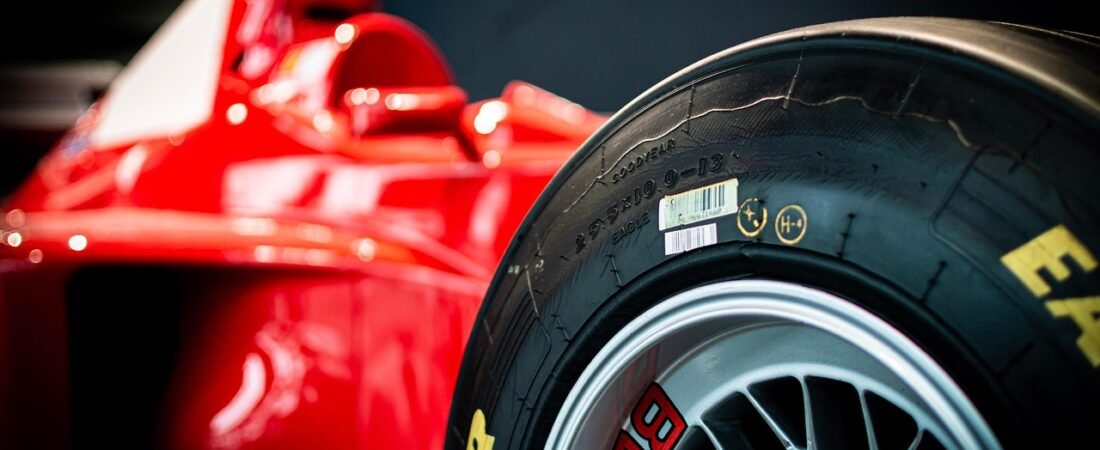In high-performance racing and sports cars, speed is not only a matter of horsepower. Control is true performance, and your tires are where it starts. Tires are the most important factor in grip and safety since they are the only part that physically contacts the road.
The right tires can make you faster around corners and stop quicker. The wrong tires can be dangerous and slow you down. Select the Best tires for street racing, track day, and performance driving on the road.
Source:iStock
Why Performance Tires Matter for Racing
Regular tires are made for everyday driving. They focus on lasting long and being quiet. Performance tires for racing are different. They’re made to grip the road better and handle high speeds. High-performance tires give you:
- Great grip on dry roads
- Sharp turns at high speed
- Helps you go faster on the rack
- Matches your car’s power
- Better control while driving fast
Types of Performance Tires for Racing
Street Performance Tires
These tires work well on both the street and track. They’re good for people who drive to the track and then race. Popular choices include:
- Michelin Pilot Sport series
- Toyo Proxes R888R
- Continental ExtremeContact Sport
Track-Only Racing Tires
These tires are only for racing. They’re unsafe for street driving but give the best grip on the track. Hoosier racing tires, like the A7 for Autocross and R7 for road racing, are considered the fastest possible.
Semi-Slick Tires
These are between street and track tires. They have some tread but are mostly smooth. They are awesome on track days and autocross.
Soft vs Hard Compound: What’s the Difference?
Compound means how soft or hard the rubber is. This is super important for racing.
Soft Compound Tires
- Grip the road better
- Get warm faster
- Wear out quicker
- Work best in warm weather
- Give you faster lap times
Hard Compound Tires
- Last longer
- Take more time to warm up
- Don’t grip as well when cold
- Better for long races
- It costs less to replace
How to Choose the Perfect Performance Tire
Step 1: Know Your Car
Check your car’s manual. You need to know:
- Tire width (like 225)
- Sidewall height (like 45)
- Wheel size (like 17)
Step 2: What is your driving style
- Track days only: The stickiest tires that you can afford
- Street and track: Pick tires that work for both
- Autocross: Choose tires that warm up fast
- Road racing: Pick tires that last longer
Step 3: Consider Your Budget
Good performance tires are higher priced compared to normal tires. Nevertheless, they are worth it since they are faster and safer.
Step 4: Weather Conditions
Different weather needs different grips:
- Dry only: Semi-slicks or racing slicks
- Sometimes wet: Tires with some tread
- Rain racing: Special wet-weather racing tires
Source: iStock
Mistakes to Avoid When Buying Performance Tires
- Going too cheap: Bad tires can be dangerous at high speeds
- Wrong size: Always match your car’s requirements
- Ignoring load rating: Make sure tires can handle your car’s weight
- Buying the wrong type: Track tires aren’t safe for street driving
- Not considering weather: Some tires only work in dry conditions
When to Replace Your Performance Tires
Performance tires wear out faster than regular tires. Replace them when:
- Tread depth gets below 4/32 inch
- You see cracks in the sidewall
- They are cycled more than enough (10-15 track days, as a rule)
- When one tire is wearing so much faster than the rest
Conclusion
Choosing the best performance tires will help you be faster and safer in racing or track-style driving. Consider where you will drive, how much money you require, and what grip you need.
Keep in mind, do not save on safety and performance. Take good street performance tires as an entry point into racing. You will always have a chance to upgrade to more serious racing tires in the future.
Whether it is track days, autocross, or the ambition to perform better on the curvy roads, proper tires will significantly change a car’s behavior and responsiveness to brakes.

